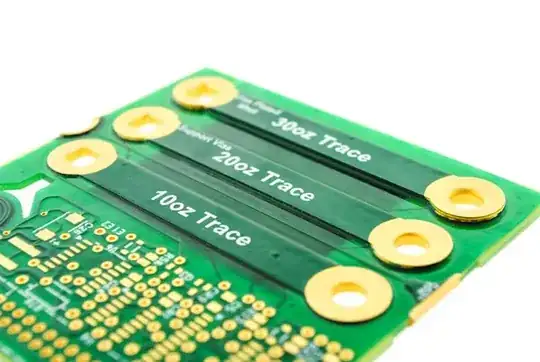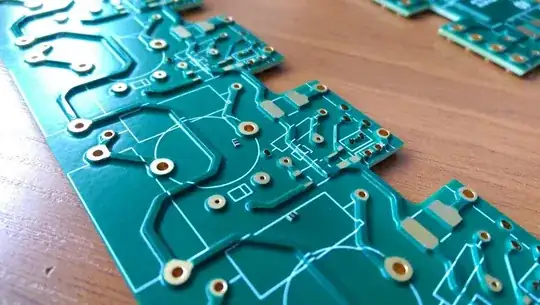Along with ability to handle higher currents, thick copper has much lower thermal resistance per square of foil.
Standard 1 ounce/square_foot foil has Rthermal of 70 ° C per watt per SQUARE.
In that thickness, with a trace 0.01" by 0.3", which has 0.3/0.01 = 30 squares, the R_thermal is
- R_thermal = 70 * 30 == 2,100 ° C per watt, end_to_end
Whereas a square Ground Plane or VDD plane would have 70 ° C per watt from edge_to edge.
Now for the THICK metal:
With 13 ounce (per square foot) foil, that same trace 0.01" wide by 0.3" long, has 2,100/13 or (70/13) * 30 = 5.3 * 30 = 160 degree per watt end_to_end.
And a thick (square)plane has 70/13 = 5.3 ° per watt, measured edge_to_edge.
One of the great things about PCB design is the use of overlapping layers of foil, tho separated by FR-4, to move heat. From memory (modeled decades ago), an overlap of 2cm between two layers of THIN foil, will easily move heat between layers. Even tho the FR-4 has about 200X the R_thermal.
Thus if you need to remove heat, keep all the (non_plane) layers somewhat filled with metal so the heat can easily move across layers and reach the heat removal paths (in satellite PCBs, we had to plan how to get heat to the metal mounting posts or card_guides)



